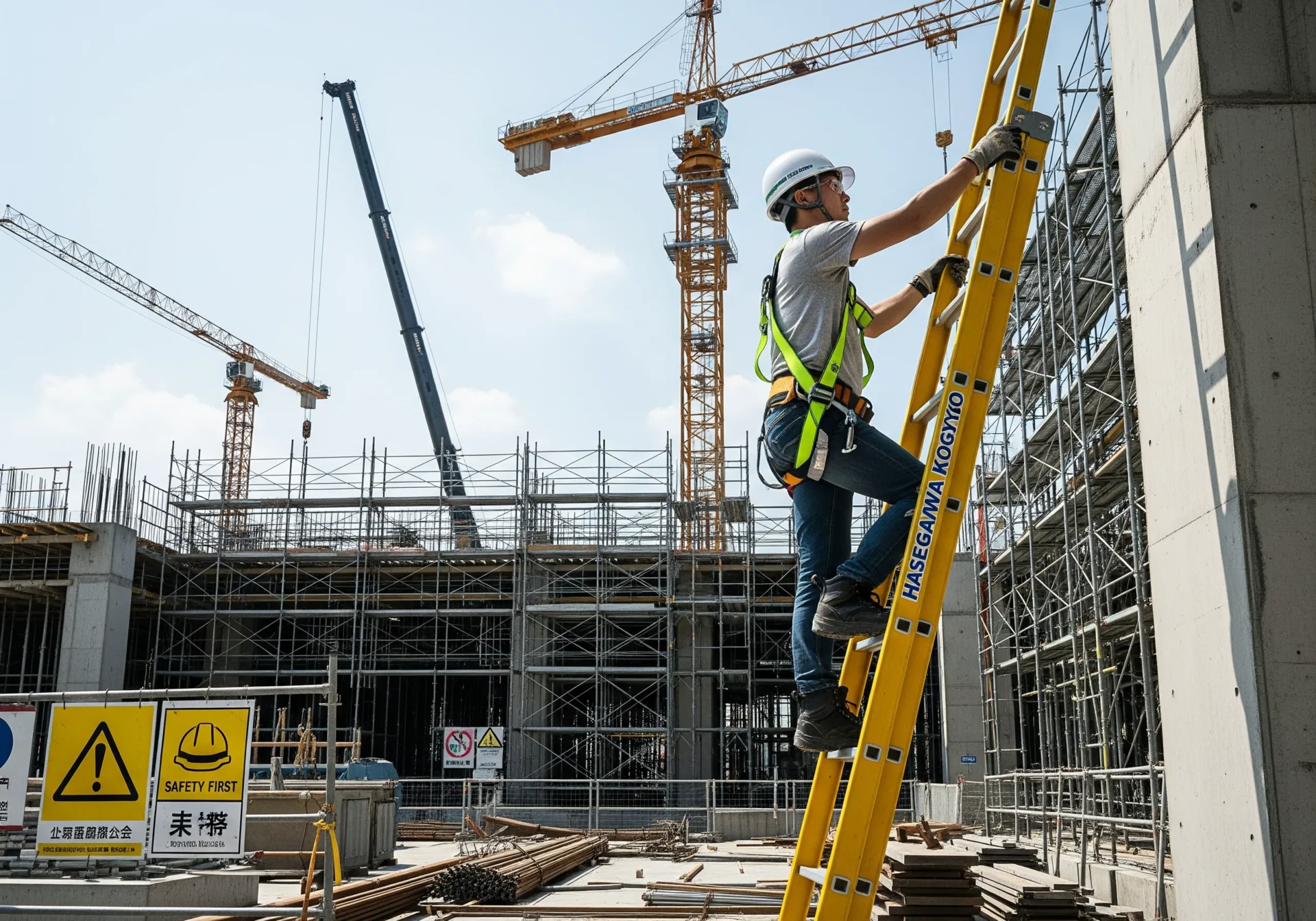Introduction | Safety Rules for Ladders and Stepladders and Basic Knowledge for Working at Heights
Ladders and stepladders, essential for working at heights, can lead to serious accidents if used incorrectly, despite their convenience. This article explains the latest safety standards and practical usage methods for site managers and workers who routinely perform tasks at heights in the manufacturing, construction, and logistics industries. In recent years, accidents involving falls from ladders and stepladders have not decreased. After outlining the background and common factors of these accidents, we will emphasize that thoroughly implementing basic rules—such as setting the correct angle, observing step limitations, and conducting pre-use inspections—is the first step to ensuring safety.
Source: Hasegawa Kogyo
Challenges and Background | Risk Factors for Ladders and Stepladders Revealed by Accident Statistics and Regulations
Market Data
In Japan, approximately 20% of work-related accidents at heights are related to ladders and stepladders, with several hundred serious incidents reported annually. A similar trend is observed in Vietnam, with a particularly high rate in the construction, electrical installation, and warehousing sectors. While the Industrial Safety and Health Act in Japan details work methods and equipment standards, and the Vietnam Law on Occupational Safety and Health mandates safety education and equipment, their enforcement varies at the practical level. Accidents cause not only direct losses, such as production stoppages and medical costs, but also indirect losses, such as a decline in corporate credibility.
Risk Presentation
Many accidents are caused by non-compliance with basic rules, such as failing to set a ladder at the proper 75-degree angle, standing on the top plate of a stepladder, or not locking the spreader bars. Furthermore, weather conditions like rain and strong winds, and ground conditions such as uneven or slippery surfaces, further increase the risk of tipping and falling. Correctly understanding these factors and taking preventive measures is fundamental to ensuring safety.
Source: Ministry of Health, Labour and Welfare, Tochigi Labour Bureau
Product and Service Introduction | Hasegawa Kogyo’s Safety-Designed Ladders and Stepladders and Their Implementation Effects
Features
Hasegawa Kogyo’s ladders and stepladders are designed with a focus on on-site safety and durability. The rungs feature a non-slip finish to ensure stable footing even in rainy or dusty conditions. The spreader bars have a one-hand locking mechanism, enhancing safety during setup. For electrical work, we offer FRP (Fiber-Reinforced Plastic) ladders that have passed a 30kV withstand voltage test, boasting high insulation performance. All products comply with ISO, JIS, and Vietnamese TCVN standards, meeting international safety criteria.
Case Study (Before → Action → After)
Before: At a logistics warehouse, a worker was injured in an accident caused by standing on the top plate of a stepladder. The resulting work stoppage led to delivery delays.
Action: They introduced Hasegawa’s safety-designed stepladders and implemented pre-work inspection training to ensure compliance with rules like locking the spreader bars and observing step limitations.
After: In the year following the implementation, ladder-related accidents were reduced to zero. Additionally, the increased sense of security among workers improved work efficiency by approximately 10%, leading to a better on-time delivery rate.
Source: Hasegawa Kogyo
Hasegawa’s Reliability | Quality Management, Custom Order Support, and Safety System
Quality Management and Certification
Hasegawa Kogyo has obtained ISO 9001, the international standard for product quality, and implements consistent quality management from design to manufacturing and shipping. In particular, our system of 100% pre-shipment inspection ensures safety by checking the structure, function, and appearance of every single unit. This establishes a mechanism to prevent defective products or potential risks from reaching the worksite.
Custom Orders and Support System
Worksite needs vary widely, and Hasegawa Kogyo designs and manufactures custom stepladders for specific applications. We can propose specifications tailored to the work environment, such as for narrow spaces, chemical resistance, or voltage resistance. Furthermore, we offer on-site safety training services upon product delivery, providing direct instruction on correct usage and inspection methods to support safe operation after implementation.
Source: Hasegawa Kogyo
Conclusion | The Three Basic Safety Principles for Ladders and Stepladders to Prevent Accidents
The fundamentals of using ladders and stepladders safely are: maintaining a 75-degree setup angle, limiting use to the third rung from the top (or the second for ladders 210cm or shorter), and conducting thorough pre-use inspections. Adhering to these principles can prevent serious accidents like tipping and falling. For consultations on creating a safe work environment or selecting the right products, please feel free to contact Hasegawa Kogyo’s support desk. For more detailed procedures and inspection items, please refer to the official safety manual or leaflets from the Ministry of Health, Labour and Welfare.
Source: Hasegawa Kogyo / Ministry of Health, Labour and Welfare, Tochigi Labour Bureau

